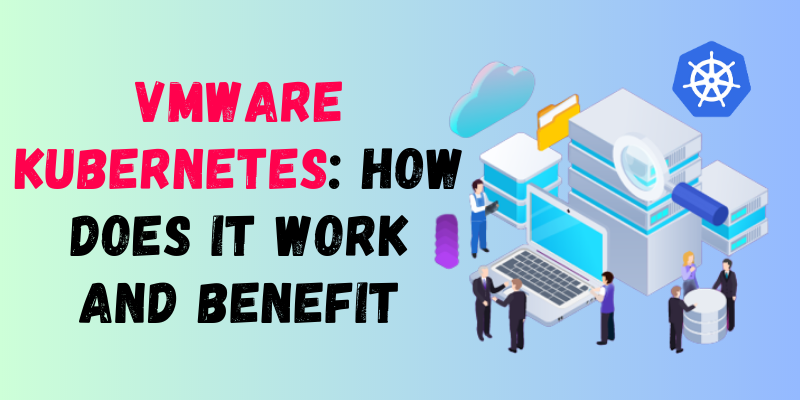VMware Kubernetes: How Does it Work and Benefit
Kubernetes is a free, open-source system that automates containerized application scalability, deployment, and management. Kubernetes, in a nutshell, allows application containers to run anywhere, whether on physical servers, virtual machines (VMs), or in the cloud. Because Kubernetes is cloud-agnostic, applications can be deployed in any environment. Kubernetes is simple to set up on VMware, one of the most popular virtualization platforms. The most straightforward approach is to use a Kubernetes distribution such as MicroK8s or K3s. There are, however, other options. Join FITA Academy‘s VMware Training Course In Chennai to learn more about VMware. It offers advanced certification training and 100% job placement assistance. We’ll go over the VMware Kubernetes: How Does it Work and Benefit.
What is Kubernetes?
Kubernetes is an open-source container management, deployment, and scaling system. Google says it is “designed to make it simple for builders to develop and deploy applications which operate across a distributed system.” Kubernetes is essentially a platform for scaling up and managing Docker containers. Self-healing, autoscaling, and rolling updates are just features that make it appealing for large-scale deployments. While developers mainly use Kubernetes, it is also gaining popularity as a tool for simplifying complex deployment management among operations teams.
What is VMware Kubernetes?
Kubernetes in VMware provides a combined management interface that allows users to centralize and secure their apps and workloads across both traditional virtual machine-based workloads and modern environments, based on the system that allows organizations to manage their applications and workloads a hybrid or multi-cloud environment. VMware Kubernetes includes:
- All of Kubernetes’ features.
- Enhanced security.
- Integration with vSphere infrastructure.
- Support for high-availability deployments.
Kubernetes VMware includes integration with VMware’s vSphere platform, making Kubernetes clusters easy to deploy and manage on vSphere infrastructure. The Kubernetes on VMware installation process is easier. Once installed, this makes a solution for organizations that want to adopt containers but require the added stability and management features of an enterprise-grade solution on hybrid or multi-cloud services.
How Does it Work?
Kubernetes, an open-source container orchestration framework, simplifies the administration of containerized applications. The vast majority of businesses use VMware virtualization platforms. As containers gain popularity, using VMware infrastructure to deploy and manage containers alongside traditional virtual machines is becoming increasingly important.
Enroll in VMware Online Course, Which will help you understand more Concepts about the Why Run Kubernetes on VMware.
Kubernetes is a promising method for coordinating the deployment and operation of modern, container-based applications. VMware began assisting Kubernetes as part of its vSphere virtualization platform, including the ESXi hypervisor, in 2019. Kubernetes in VMware functions similarly to a standard Kubernetes cluster, with processes and tools that work across multiple implementations. Application developers typically use Kubernetes’ “declarative syntax” to specify the required resources, such as storage, networking, bare metal servers, relationships, and availability requirements. VMware’s partnership with Kubernetes enables them to use industry-standard Kubernetes syntax with upstream Kubernetes development rather than having exclusive access to vSphere APIs, infrastructure, or even clients.
Benefits of VMware Kubernetes
In contrast to most other methods, running Kubernetes with VMware provides a few significant benefits for specific use scenarios. Among the advantages are:
Coordinate the management of containers and VMs
The most notable advantage of VMware Kubernetes is that VMware is a framework that equally values containers and standard VMs. Using Cloud Foundation and vSphere, you can create and manage traditional VMs alongside Kubernetes clusters.
Kubernetes VMs can be coordinated using other technologies such as KubeVirt. Even so, rather than coexisting with your Kubernetes cluster in that scenario, your VMs do so. VMware makes it simple to manage virtual machines and containers from a single platform while they run independently.
Comprehensive Infrastructure
VMware Kubernetes provides a unified platform for computing, storage, and networking resources required to run a Kubernetes cluster. Furthermore, as we will see below, VMware provides a simple and automatic procedure for creating workload domains that can cluster using that architecture.
Automated setup for Kubernetes
On VMware, the majority of the Kubernetes component deployment process is automated. Sure, this is true for many different Kubernetes systems, but VMware makes the Kubernetes setup very simple.
GUI-Based Governance
The vSphere GUI in VMware can be used to handle the majority of Kubernetes setup and administrative tasks. This is useful for administrators unfamiliar with Kubectl who prefer not to manage anything via the CLI.
Conclusion
We discussed VMware Kubernetes: How Does it Work and Benefit in this blog. Kubernetes is a significant entity in the VMware universe. Although VMware’s Kubernetes tools are not the easiest or lightest, they are an excellent choice for deploying Kubernetes regardless of connectivity and virtual machines and managing containers from a single platform. You can find out more about this by checking out the courses offered by FITA Academy, VMware Training Institute In Chennai which provides the best VMware Certification Training with Placement Support.
Read more: SQL Interview Questions and Answers

